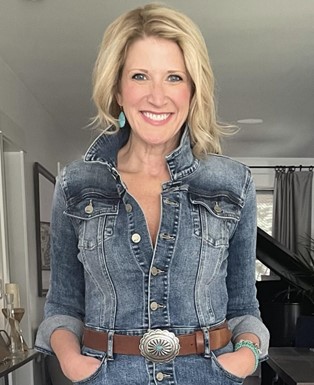This story is the first installment in a series of stories about policies affecting impoverished and minority students at DU and the Denver community.
The Health and Counseling Center (HCC) and the Counseling Psychology Master’s Program at the Morgridge College of Education are both working to increase culturally sensitive mental health counseling options for minorities on campus through training and hiring practices. However, both students and staff agree that there is work still to be done on campus climate.
“A lot of my work has been in university counseling centers, “ said Pat Garriott, an assistant professor of Counseling Psychology in DU’s Morgridge College of Education. “What I have observed on predominantly white campuses, like DU, is that isolation, feeling marginalized or that you don’t matter, and cultural incongruity, lead to psychological stress and hesitation to seek out psychological services.”
Garriott and Ruth Chao, associate professor of Counseling Psychology and Morgridge College of Education are two of DU’s resident experts on the challenges faced by minority college students when it comes to mental health as part of the program training future counselors at DU.
“I think minority students might find it difficult to look for help, including mental health counseling, due to a trust issue between counselor and student,” said Chao. “According to the literature, minority students have concerns including stigmas, thinking ‘How will people look at me?,’ or concerns that they might not be within the normal populations. Some minority students may have a concern if the counselor is from a different background as to whether they can understand that. In the classrooms, the students may have concerns about teachers being from different backgrounds and the mutual understanding of cultural backgrounds may be an issue there as well. ”
HCC Director Alan Kent is not only aware of the issue of minority mental health at DU – he considers inclusive excellence “a great passion,” and is planning to focus more on inclusive excellence this year after a recent training on cultural competency this August and an upcoming September training on culturally competent healthcare.
Kent has been with DU’s HCC just a year, but in that time, he has put his 20 years of college counseling experience and “extensive” background with bilingual and LGBT communities to work to improve inclusive excellence at the HCC.
However, some students have concerns that there is still not enough support for minorities to explore their feelings on campus.
“Right now, there kind of is [a support system for minority students], but there should be more,” said Daniel Kim, a third year International Studies major from Denver who identifies as a minority and has been involved with Latin Dance Club, ASA, HRE and Beta Theta Pi fraternity.
“There’s so much controversy over our mascot, and that’s been huge for the minority community as far as what’s been talked about. There needs to be a space where each side can talk about those things that’s more comfortable than just Facebook. There’s not enough space where we can talk about these things comfortably.”
Issues faced by minority students
Mental health can be a major concern for college students. Fifteen percent of graduate and 18 percent of undergraduate students have seriously considered attempting suicide in their lifetimes, according to the Suicide Prevention Resource Center, a federally funded center. Further, The U.S. Department of Health and Human Services Office of Minority Health found that in general, minorities have less access to and less availability of mental health services; African Americans are 20 percent more likely to report having serious psychological distress than Non-Hispanic Caucasians; suicide attempts for Hispanic girls, grades 9-12, were 70 percent higher than for Caucasian girls in the same age group in 2011; and adolescent American Indian/Alaska Native females have death rates at almost four times the rate for Caucasian females in the same age groups.
Together, they seem to beg the question: Could the minority of students be bearing the majority of risk when it comes to mental health?
Garriott and Chao train counselors to address some of the unique mental health issues faced by minority students.
“Well, in terms of specific issues that racial ethnic minorities might face, I would think about racial micro-aggressions, which really refer to subtle expression of racial aggression that are often unintentional by the perpetrator but face the victim with confusion and uncertainty. That uncertainty can often make the experience even more distressing,” said Garriott.
Another challenge for minorities is acculturative stress, which occurs when someone is going through the acculturation process, or maintaining your cultural norms, values and expectations while adapting to another culture’s values, expectations and norms, said Garriott.
Kim said he had experienced some of these stresses at DU.
“The first time I came to DU, I was paired up with another Asian American like myself for orientation,” said Kim. “I don’t know that DU did that on purpose, but when we’d go to the cafeteria to eat, people would judge us as if we were some sort of international students. There are definitely struggles – I’m sure as an international student, that’s hard for them as the minority too.”
While the stigma of seeking counseling exists for people of all races, said Garriott, stigma and shame can especially be cultural barriers for minorities.
“It’s this idea that you must be weak or extremely disturbed to seek a counselor. That leads to this cultural incongruity, the idea that traditional counseling services, 50 minute talk therapy, may not be culturally congruent for a lot of clients,” said Garriott. “Another item is mistrust of psychological services, and the idea that a counselor won’t be able to help, and that can be especially true if they know someone or have had a bad experience in the past.”
Garriott said that LGBTQ groups can also be vulnerable to these types of stresses.
“Micro-agressions can also be an issue for LGBTQ students. I mean, how often do you hear, ‘That’s so gay!’ floated around a university campus?” said Garriott. “I think even the ‘coming out’ process, drawing on my experience in university settings, you as a counselor may be the first person that they’ve told about their orientation. Then it may be even more important to help them feel not judged.”
A possible remedy to this problem, suggested Garriott, is to have diversity on the counseling staff.
“If the staff webpage reflects what a student looks like or they specialize in their problem, such as LGBTQ issues, it makes the student more comfortable knowing there is someone who ‘gets’ them and will understand their experience,” said Garriott.
Another barrier to seeking treatment, said Garriott, is the access to mental health providers or financial means for minority clients.
What is being done
Kent, Garriott and Chao have the opportunity to address these problems by training future counselors in cultural sensitivity, with many students in the graduate school of Counseling Psychology working in the HCC.
When training her students, Chao focuses on helping her students become aware of their own privilege when working with minority clients.
“When they are with the session with the client, they are bringing their own world views into the therapy room,” said Chao. “If they are from white backgrounds, how does white privilege affect their interaction with a client who is a black male? I also encourage them to explore and increase their understanding about different cultures. For example, music has a big implication in African American culture, so I encourage them to explore that.”
Kent also has tried to address needs of minorities within the existing HCC staff.
“Our graduate school of counseling psychology has a four course sequence available [in multiculturalism], so there is a lot of academic preparation. We [the HCC] provide ongoing professional development,” said Kent.
“We have had numerous open positions this year and we have made a very assertive effort to increase our diversity – we worked with minority recruitment specialist and we identified some websites to post our openings in different locations to broaden our search and applicants, such as listserves for African American or Latina psychologists. We do make a very conscious effort to get a broad applicant pool.”
These efforts are now beginning to be reflected on staff, Kent said, although he’s not done looking for fresh faces.
“We have several therapists that identify as LGBT and have made connections in that community. We have a therapist who is Chinese American and has a bicultural background and we also have ones that identify as Latino and Latina. It is a part of our goal to increase our offerings in this area.”
According to Kent, DU attempts to address not only location access, by having services right on campus, but also financial access to its mental health services.
“DU requires that undergraduates pay the health fee and that is built into their tuition bill and included in financial fee. If you pay that fee, counseling sessions are only 10 dollars which is quite affordable,” said Kent. “Graduate students don’t have to pay the health fee so they would have to pay for the services and see if their insurance will reimburse them. Basically, the health fee costs what one counseling session in the community would cost, so it’s a very good deal.”
Language provides yet another barrier, especially for international students.
“Well, one of the challenges I have found in terms of broadening the diversity and language capabilities of the staff is finding candidates in the Denver metro area,” said Kent. “For instance, through my professional listserves, I’ve tried to identify bilingual Chinese speaking therapists, and as far as I can tell, there aren’t any in the Denver metro area that I’ve been able to find. Like everyone else, another challenge is limited resources. Recruiting highly qualified bilingual therapists is also a challenge given our salary structure.”
However, Kent has tried to address the problem last academic year with a new service called telephonic interpreters.
“For instance, if a Chinese student from the English language institute came in crisis, we could immediately call the interpreter and she or he would be available to help us do the counseling session in their language.”
The road ahead
Although Kent has made headway on tackling minority mental health issues this year, tailoring the HCC’s services to various populations may prove to be easier said than done.
“We haven’t broken down the data by ethnic group but part of what we are looking at is to determine whether different ethnic groups utilize our services in the same percentage that they are represented in the DU community,” said Kent. “For instance, if we have 5 percent African American students, do students make up 5 percent of our population here at the counseling center? We are tracking that data to see if different minority groups are utilizing our services in the same proportion.”
In the meantime, both Chao and Kent stressed the importance of student engagement on this issue.
“I think if there are some outreach programs from health [and] counseling centers to have more interactions with minority students it may reduce their concerns about mental health issues, and they could see the counseling center as a supportive place to them. I think the university can facilitate mutual understanding between students and counselors,” said Chao.
That responsibility falls not only to the university, but to student groups, she said.
“If students organization or activities that makes them feel more welcomed, or the campus can have an event to appreciate the contributions of minority students to shift the perspective. That could create a positive perspective for this population,” said Chao.
Kent also stressed the importance of student groups as part of the HCC’s strategic plan this year.
“We do regular outreach and orientations to the I-house, we’ve done some outreach with the CME (Center for Multicultural Excellence) and I’ll be doing some trainings for the Pioneer Leadership Program and the Emerging Leader Institute,” said Kent. “Part of our strategic plan is to make connections with a variety of student organizations, such as Native American or Asian American affinity groups. Our goal this year is to establish ties with traditionally underrepresented minority groups.”
Chao further stressed the importance of this move.
“It’s important to have some intercultural and interracial dialogue. If the campus can have more dialogue between minority and white students to see strengths in each other, I’m sure that would enhance the positive atmospheres on campus,” said Chao.
Kim said there is still work to be done to provide this on campus.
“The purpose of groups like ASA and LSA is to make people aware of specific minority problems, to create a social group as well, where people who have experienced the same problems as an Asian American or Latin American can come together. Both those conflict and go together at the same time,” said Kim. “I feel that groups like ASA, BSA, LSA send some positive messages, but there is some isolation between the different minority groups. I feel there needs to be more mix where people who aren’t Asian American or African American still feel comfortable in those groups. Sometimes when someone who wasn’t Asian came to ASA, I could see how uncomfortable they felt. I feel that there needs to be more cohesion between all minority groups, but each minority has their own problems and purpose, so I understand both sides of it.”
Student groups interested in working with Kent can reach him through the HCC.
This story is part of a three-part series aimed at giving equal voice to populations in poverty by examining policies that affect them for the Marguerite Casey Foundation 2013 Scholarship for Journalism on Poverty. The series, called, “Impoverished Policies,” examines progressive social policies that have gaps that disproportionately affect the poor or minorities.











